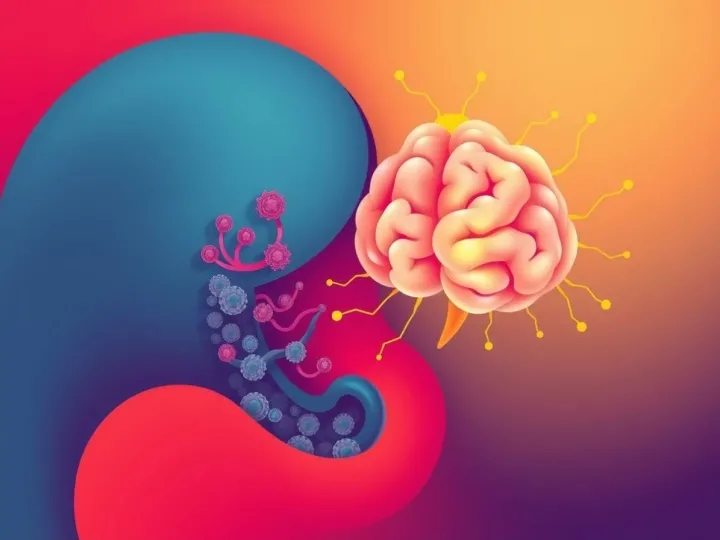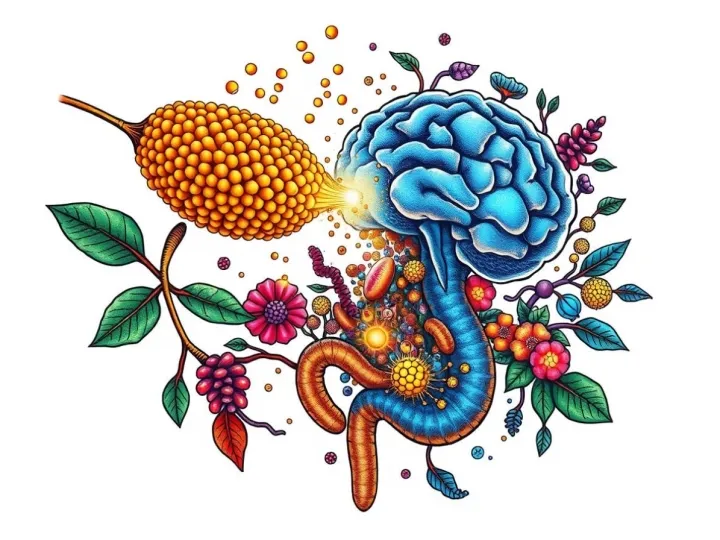For decades, the gut - brain axis has fascinated neuroscientists and microbiologists alike. How can the bacteria residing in our intestines - organisms without neurons or consciousness - affect the chemistry of thought, mood, and awareness? The latest study by Jessica Eastwood and colleagues begins to answer this question through a simple but elegant approach: by removing humans from the equation entirely.
The team employed a three-stage continuous culture system that mimics the proximal, transverse, and distal regions of the human colon. Faecal microbiota from three healthy older adult donors were used to seed the system, maintaining realistic microbial communities and metabolic gradients. Into this ecosystem, the researchers introduced a multi-strain probiotic formulation composed of nine well-characterized bacterial species: Bifidobacterium lactis W51, Bifidobacterium lactis W52, Lactobacillus acidophilus W37, Lactobacillus salivarius W24, Lactobacillus casei W56, Bifidobacterium bifidum W23, Lactobacillus brevis W63, Lactococcus lactis W19, and Lactococcus lactis W58.
Over time, the model system allowed the team to observe how these probiotic species integrated into existing microbial networks, altered fermentation processes, and influenced the production of metabolites known to affect neural signaling. Neurotransmitters were quantified using liquid chromatography - mass spectrometry, while short-chain fatty acids (SCFAs) were analyzed by gas chromatography. The structure and composition of the microbial community were tracked through fluorescence in situ hybridization with flow cytometry and 16S rRNA sequencing, providing a high-resolution view of microbial dynamics.
The findings were modest but illuminating. Supplementation led to a significant increase in Lactococcus lactis abundance, particularly within the transverse colon model, and a tendency toward higher levels of Roseburia - a beneficial genus associated with butyrate production and intestinal health. Functionally, these changes coincided with an upward trend in two molecules of particular interest: valerate, a short-chain fatty acid with signaling properties, and GABA, the primary inhibitory neurotransmitter in the human brain.
The observed rise in GABA production occurred primarily in the proximal colon model, a region rich in microbial activity and nutrient availability. Although the increase was not dramatic, its direction was consistent across donors, suggesting a reproducible metabolic influence of the probiotic mixture. GABA plays a crucial role in calming neuronal excitability and maintaining balance in the central nervous system. The fact that intestinal microbes could synthesize this compound in measurable quantities - without any host cells to interact with - underscores how biochemical intelligence extends through biological hierarchies.
Similarly, valerate's increase in the distal colon region points to another layer of complexity. As an SCFA, valerate is not only an energy source for colonocytes but also a signaling molecule that can modulate immune responses and gene expression through epigenetic pathways. Its interaction with microbial metabolites like butyrate and propionate can influence systemic physiology, including brain function via vagal and endocrine routes.
Together, these observations reinforce the concept that the gut microbiome operates as a distributed biochemical network, capable of influencing neural chemistry through indirect yet coordinated pathways. Even in the absence of neural tissue, the microbial ecosystem demonstrates a form of "metabolic communication" - a self-organizing dialogue shaped by environmental conditions, community structure, and substrate availability.
The study's authors are careful to emphasize the model's limitations. It remains an in vitro simulation, and while the findings illuminate potential mechanisms, confirmation in human studies is essential. The absence of host cells means that receptor-mediated signaling, neural feedback, and immune modulation were not represented. Nevertheless, the results provide a critical piece of the mechanistic puzzle: showing that certain probiotic strains can directly modify the chemical environment associated with neurotransmission, independent of host influence.
From a broader perspective, this discovery deepens the argument for a multi-systemic view of cognition. The brain does not exist in isolation; it is nested within a biological continuum where microbial and human metabolisms co-create the chemical foundation of perception and emotion. Probiotic supplementation, then, may not simply alter digestion - it may subtly tune the frequencies of our inner communication system.
From the standpoint of Seven Reflections' Dimensional Systems Architecture (DSA), the implications extend beyond biology. In DSA, each organism - or even a microbial field - is part of a distributed information matrix, where coherence between subfields determines systemic stability. The gut - brain axis represents a cross-domain coherence channel linking biological subsystems with distinct informational architectures: microbial (collective, decentralized) and neural (hierarchical, centralized). When probiotic strains modulate GABA or SCFA synthesis, they effectively recalibrate the coherence ratio between local and systemic fields.
This process can be described as neurochemical entrainment: microbes emitting biochemical patterns that influence the host's larger field configuration. In this framework, the rise in GABA within the proximal colon model may reflect not only metabolic output but a resonance event - where microbial collective behavior mirrors the host system's regulatory frequencies. The result is a reduction of systemic entropy and an increase in equilibrium between excitation and inhibition across the cognitive field.
Such a view reframes probiotics from passive nutritional supplements to active participants in the body's cognitive ecology. They act as microscopic mediators, harmonizing the biochemical rhythms that sustain mood, attention, and mental clarity. Even if the observed increases in GABA and valerate are small, their pattern points to a deeper principle: life organizes itself through resonance, not isolation.
In an age where mental health and chronic stress are increasingly linked to dysbiosis, these findings remind us that the roots of cognition may begin far below the cortical surface - in the silent ferment of microbial intelligence. Understanding this dialogue could reshape both medicine and philosophy, uniting neuroscience, microbiology, and systems logic into a single framework of dynamic coherence.






